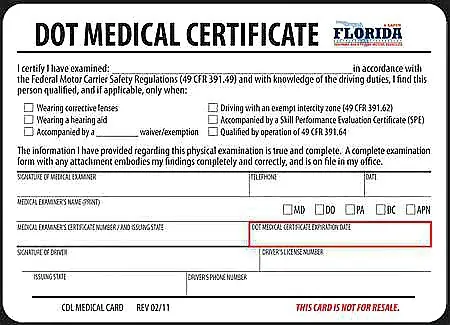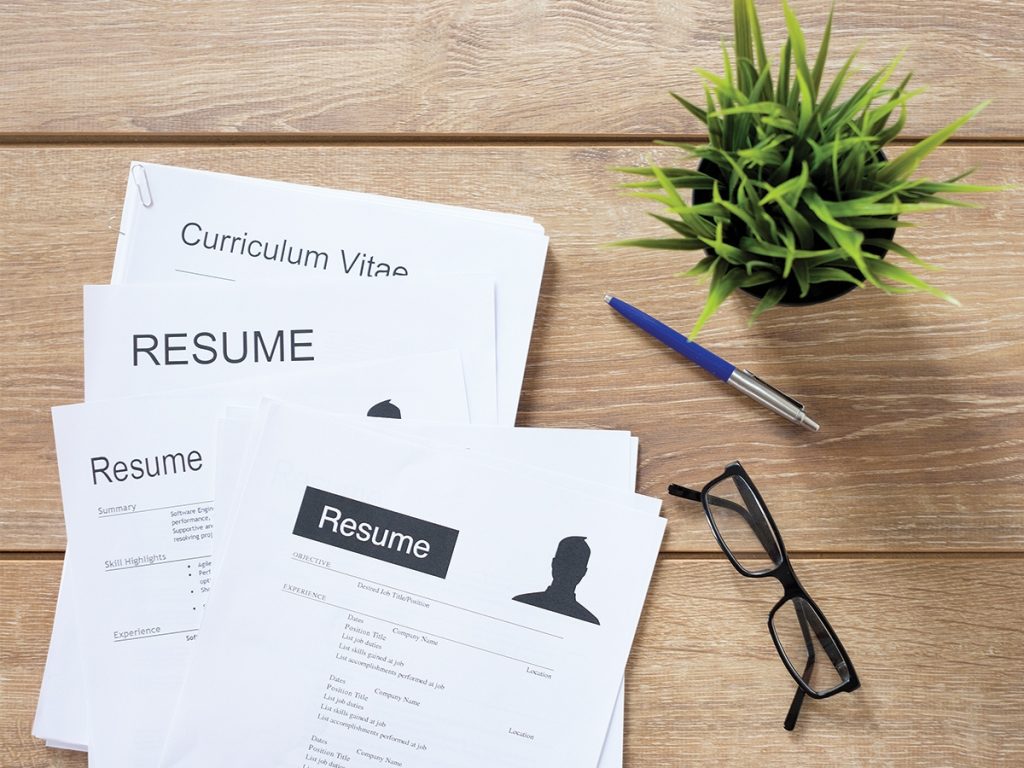Getting a Class B CDL can be a game-changer for those seeking a stable and rewarding career. This license opens doors to operating heavy vehicles such as big buses and dump trucks for local driving, offering consistent demand. Whether you are a newbie in this industry or looking to expand your options, obtaining Class B CDL is a solid choice.
Therefore, in this post, we provide a complete A-to-Z guide to help you fully understand and obtain this license. From eligible vehicles and requirements to the step-by-step process for getting a Class B CDL, we covered it all. Scroll down for more!
What is a class B CDL?
A Class B CDL is a permit for those seeking to drive large and heavy vehicles for commerce. With this license, a driver can operate single vehicles with a Gross Vehicle Weight Rating (GVWR) of 26,001 pounds or more. Moreover, with a Class B CDL, you can tow a trailer or another vehicle if its GVWR is less than 10,001 pounds.
In addition to Class B vehicles, with the right training, a Class B CDL holder can operate vehicles classified in the Class C CDL – smaller than those in Class B but still widely used in commercial driving. While many drivers with a Class A CDL are allowed to drive on over-the-road and long-haul routes, drivers with a Class B CDL typically drive closer to their homes, making this license perfect for individuals desiring to remain local. The Class B CDL also helps younger drivers or those who are not ready for the over-the-road driving experience continue to get valuable on-the-job training while furthering their career choices without committing to cross-country routes. This license thus serves as both an entry point for new drivers and a practical certification for those interested in local driving work.
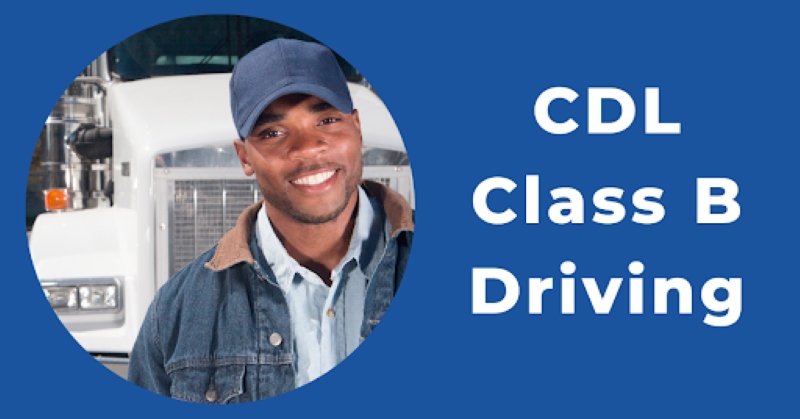
What can I drive with a class B CDL license?
A Class B CDL allows you to drive heavy-duty commercial vehicles that are required in public transit, construction, waste management, and delivery services. Specifically:
- Straight trucks: These are commonly used for many local deliveries and cargo movements.
- Large buses: These are in-city buses, school buses, and tour buses.
- Segmented/Articulated buses: Lager buses that have a flexible joint to accommodate more passengers.
- Box trucks: Generally for delivering packages and small freight.
- Garbage trucks: For proper waste management and sanitation.
- Cement trucks: It is quite crucial in construction to carry mixed concrete to the construction sites.
- Dump trucks with small trailers: These are used for hauling materials at construction or landscape places.
- Class C vehicles: Small vehicles transporting hazardous materials, provided you have the proper endorsement.
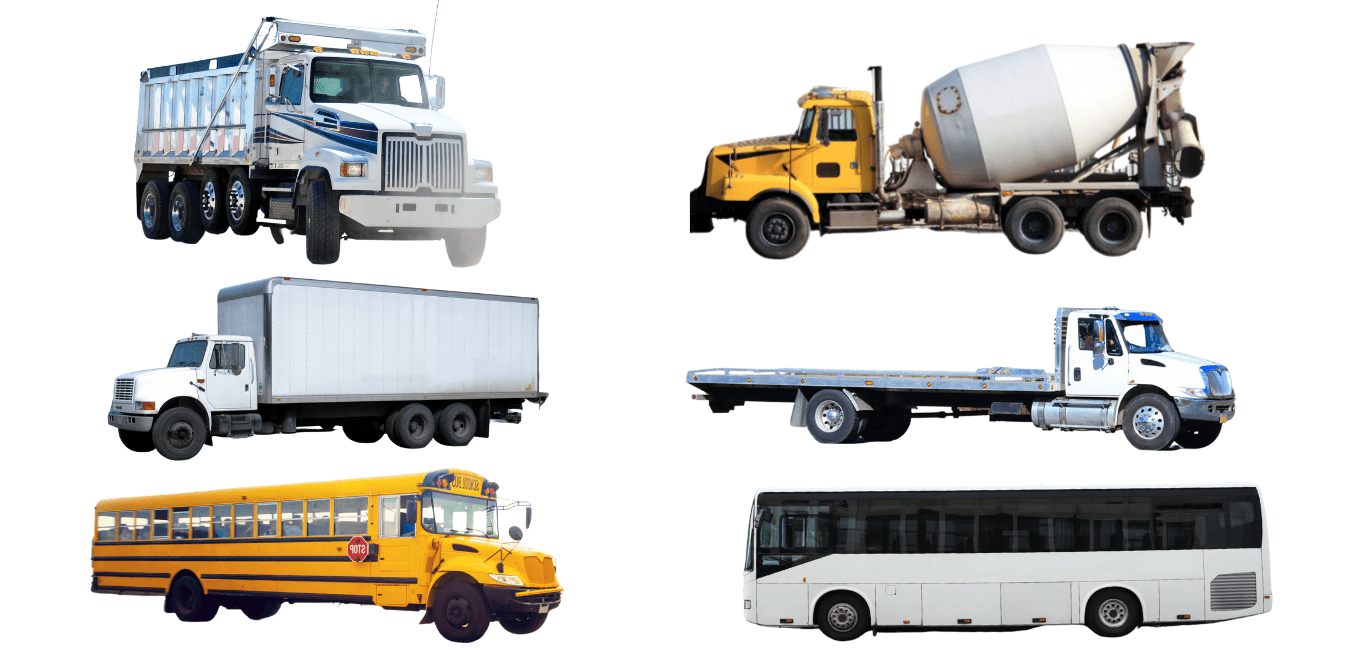
What are Class B CDL requirements?
Getting a Class B CDL requires several eligibility criteria, from age, documentation, training, testing, and health status. Here is a breakdown of key requirements:
- Minimum age requirement:
- The applicants must be at least 18 years old to drive commercially within state borders (intrastate).
- The applicants must be at least 21 years old for driving across state borders (interstate) driving or transporting hazardous materials.
- Valid standard driver’s license: You must present your valid non-commercial driver’s license before applying for Class B CDL.
- Proof of identity and residency: You need to prove your identity by providing either a passport or a birth certificate. Additionally, proof of your state’s residency such as a utility bill or lease agreement is also required.
- Verification of Social Security: You need to have a verified Social Security number to confirm eligibility for a CDL.
- Medical examination and certificate: You must pass a DOT medical examination to confirm your physical fitness to operate commercial vehicles. Most drivers are required to obtain a Medical Examiner’s Certificate (MEC).
- Commercial Learner’s Permit (CLP): You must obtain a CLP to be allied to practice driving commercial vehicles under supervision.
- Entry-Level Driver Training (ELDT): New federal rules require applicants to undergo an ELDT program provided by an accredited and registered training provider. This ELDT provides you with the knowledge and skills necessary to safely operate a commercial vehicle.
- Pass the CDL skills test: You must pass three sections in the skills test including pre-trip inspection, basic vehicle control, and on-the-road driving test. This test checks your competence in safely driving Class B vehicles.
- Provide a clean driving record and background check: Both a background check and driving record, showing few or no incidents, will be required. A serious driving violation can impact your chances of getting Class B CDL.
- Application fees: Pay for all applicable fees, such as medical examination, CLP, and physical license.

How to get a Class B CDL License
Obtaining a Class B CDL is a multi-stage process, requiring you to undergo the following steps:
Step 1. Apply for your Class B CDL
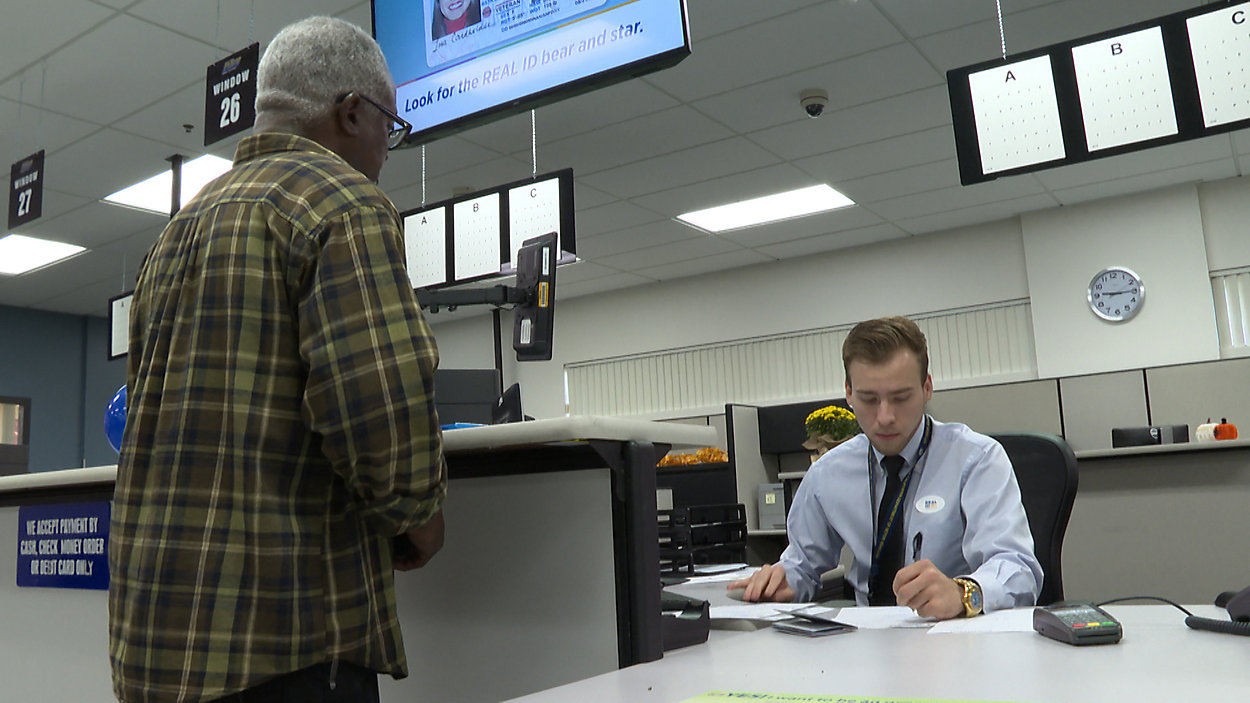
To begin with, you go to the DMV or licensing office in your state and submit your application for a Class B CDL. Remember to gather all the documents listed above and bring them with you. You will need to fill out the CDL application form and declare recent changes in your physical health that can impact your driving. The DMV will run a check on your driving record to see if you are eligible for a CDL, so make sure all the documents are in order.
Step 2. Pass DOT physical examination

You will need to take a DOT physical examination if you’re going to operate any commercial vehicle that is not exempt. You must undergo a physical examination by a qualified medical examiner, checking your vision, hearing, and general health. Once you pass the physical standards set by the DOT, you will get a Medical Examination Certificate – MEC which clears you to operate Class B vehicles.
Step 3. Pass the written tests
Depending on the type of vehicle you plan on operating, you can be required to take one or more written tests below:
General knowledge test
This is a general 50-question multiple-choice examination covering the basics of operating a vehicle, road safety, and emergency procedures. Major areas of concern will involve:
- Safe driving practices.
- Pre-trip inspection.
- Basic vehicle control.
- Defensive driving techniques.
- Driving in various weather conditions, such as rain or at night.
You need to get at least 80% correct to pass this exam.
Take the free CDL general knowledge practice tests!
Endorsement tests (if applicable)
You are required to add an extra endorsement on Class B CDL to drive specific vehicle types. Common endorsements include:
| Endorsement test | Content covered | Total Questions | Passing Score | Practice test |
| Hazardous Materials | Proper procedures for hazardous materials, safety, placarding, and emergency response | 30 | 24 | Practice now |
| Passenger Transport | Safe transport of passengers, procedures for boarding and emergency handling, and pre-trip inspections. | 20 | 16 | Practice now |
| School Bus | Student safety procedures, emergency evacuation procedures, proper loading/unloading, school bus laws | 20 | 16 | Practice now |
| Tank Vehicle | Safety of tank vehicles, liquid surge, how to inspect a tank vehicle | 20 | 16 | Practice now |
Air brake system test (if applicable)
You will be required to take and pass a test about air brake systems, components, function, and safety inspections if your Class B vehicle is equipped with an air brake system. This 25-question test assesses your knowledge of components such as compressors, tanks, and the procedure for pre-trip brake inspections. Passing this test allows you to legally drive vehicles equipped with air brakes, which most Class B vehicles are, such as buses and dump trucks.
Take free CDL air brakes practice tests!
CDL written tests cover different areas, therefore, preparing well in advance is essential to increase your success. It is recommended that you practice sample tests and questions related to each test to enhance your confidence and readiness. Free practice tests by CDL Prep are one of the best resources you can put your trust in.
Take 100% free CDL written practice tests by CDL Prep!
Step 4. Get a Commercial Learner’s Permit (CLP)
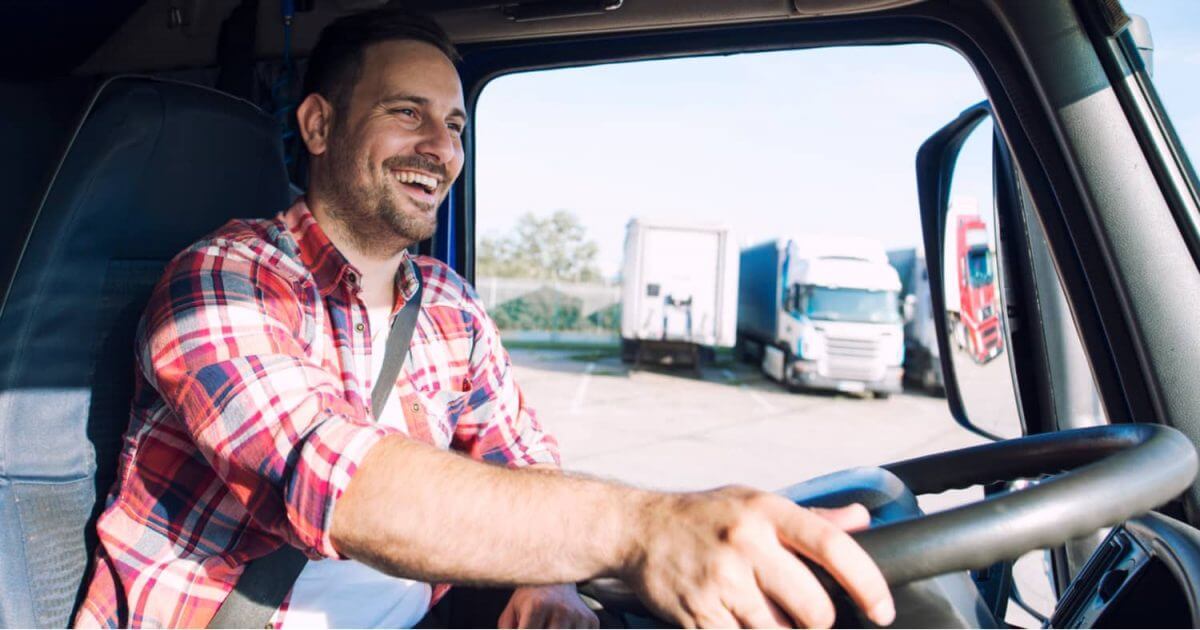
After you have passed all required written tests, you will be issued a CLP. Under the permit, you can begin driving a Class B vehicle on the road with the supervision of a qualified CDL holder. You must possess the CLP at least 14 days before you take the skills test. This will give you ample time to be hands-on in driving.
Step 5. Complete CDL training
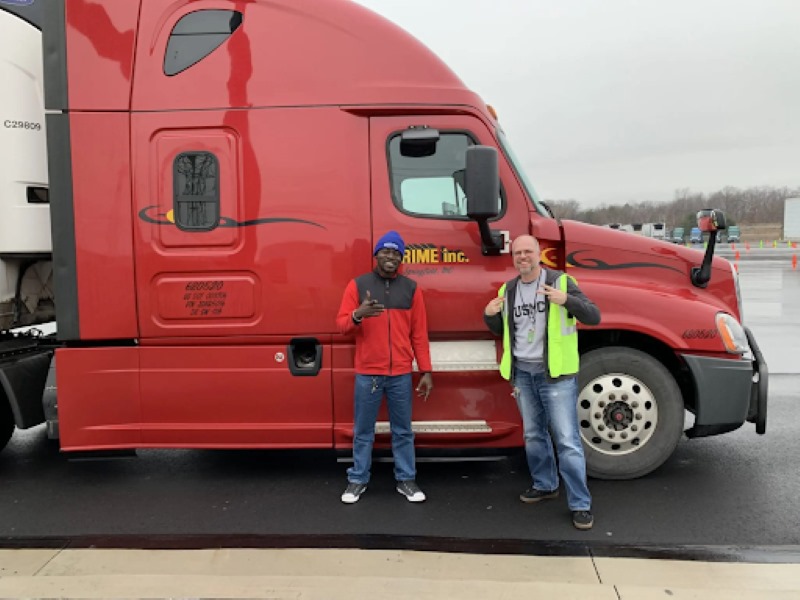
To get a Class B CDL and/or add a hazardous materials endorsement, you must obtain Entry-Level Driver Training (ELDT) from an accredited provider according to federal regulations. The components of ELDT include the following:
- Theory training: Classroom instruction in vehicle safety, federal regulations, and vehicle maintenance.
- Behind-the-wheel training: Hands-on training in vehicle control, defensive driving, and safe maneuvering.
In turn, ELDT prepares you for the skills tests by reinforcing your knowledge and practice on those key essentials.
Step 6. Pass the CDL skills test
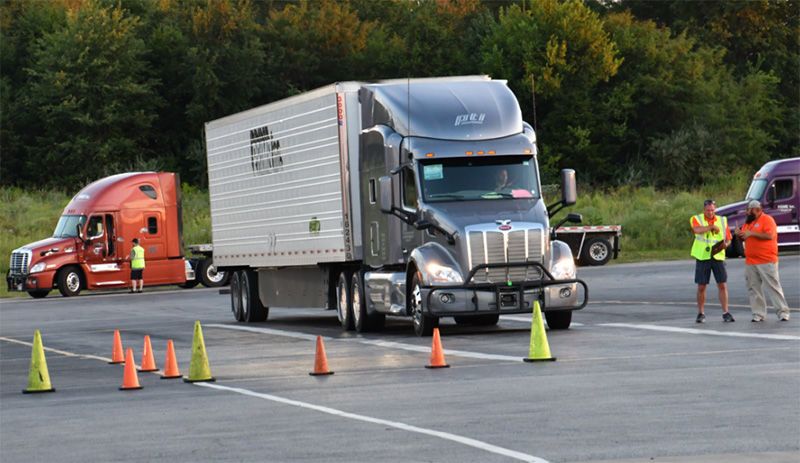
The CDL skills test measures your ability to safely operate your vehicle under real driving conditions. The test has three main sections:
- Pre-trip vehicle inspection: You identify all safety components of the vehicle, such as brakes, tires, lights, and mirrors, to ensure the vehicle is safe for operation.
Take CDL pre-trip vehicle inspection practice tests!
- Basic control skills: You will be required to drive basic maneuvers including straight-line backing, offset backing, and parallel parking. The skills demonstrate your ability to use the vehicle safely in a confined space.
- On-the-road driving test: You drive in actual traffic while an examiner observes you. You will be tested on following traffic laws, staying a safe distance apart, changing lanes, and using road signs.
Step 7. Obtain your Class B CDL
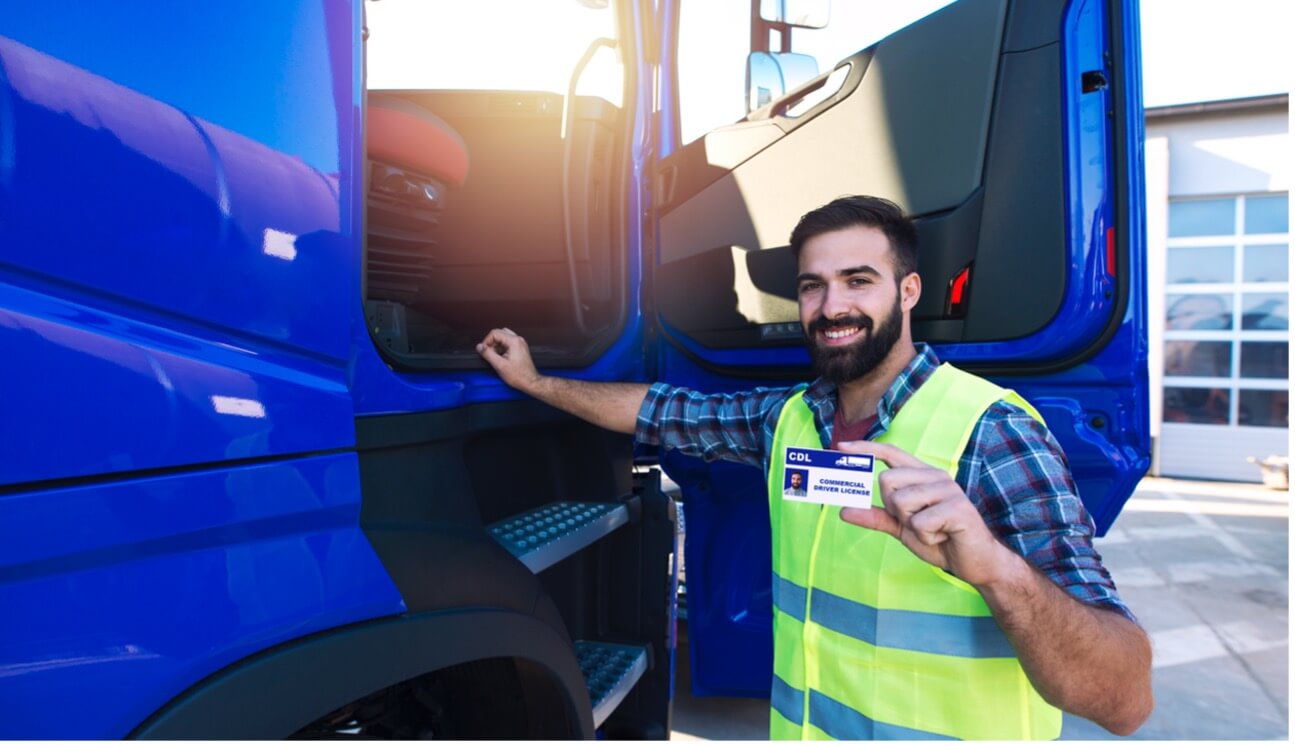
Once you have passed all the exams, submit your test scores along with the fee payment for getting your Class B CDL. With this license, you are officially licensed to operate large single vehicles such as big buses, dump trucks, and box trucks, allowing you to work in various local and regional commercial driving jobs.
FAQs
1. Is the class B CDL test hard?
The answer is different for each individual. The difficulty depends greatly on how well you prepare for the test and previous driving experience. However, with efficient study and practice, you can find it manageable to obtain a Class B CDL. Remember to utilize practice tests by CDP Prep to increase your confidence and success.
If seeking training for Class B CDL, you can read our post on Class B CDL training.
2. How long does it take to get a class B CDL?
The time to get Class B CDL can take a few weeks to months, given the conditions such as the length of the program, your availability to train, and your time to pass the written and skills tests. Normally, 3-6 weeks is a common time length for a dedicated training program. Please note that other requirements, such as the CLP and the ELDT also add the length of time required to acquire this license.
Refer to our post on How long to get a CDL to know more about the estimated time required.
3. How many questions are there on the class B CDL test?
The basic written test for a Class B CDL typically covers general knowledge, comprising 50 multiple-choice questions. Under certain circumstances, additional testing such as air brakes and/or endorsement tests may be required, adding an extra 20 to 30 questions each. To pass, you must correctly answer at least 80% of the questions.
4. How much does it cost to get a CDL class B license?
The cost of obtaining a Class B CDL ranges from $3,000 to $8,000 or more, depending on the state and training school. This charge covers training programs, permits, testing, medical examinations, licenses, and more.
To learn about the detailed breakdown of Class B CDL cost, you can check our post on How much it costs to get a CDL.
5. What is the difference between class A and class B?
Here are some key differences between Class A vs Class B CDL:
- Gross Vehicle Weight Rating (GVWR): A Class A CDL covers the operation of a vehicle with a GVWR over 26,001 pounds when towing trailers weighing in excess of 10,000 pounds. A Class B CDL covers single vehicles with a GVWR over 26,001 pounds but limits towing to trailers under 10,000 pounds.
- Types of vehicles: With a Class A CDL, you are allowed to drive different varieties of combination vehicles such as tractor-trailers, tankers, and flatbeds. In contrast, a Class B CDL will cover single heavy vehicles such as box trucks, dump trucks, and large passenger buses.
- Training content: Training for Class A generally takes longer with higher levels of complexity and safety requirements.
- Salary: Class A CDL holders who usually obtain long-driving jobs can expect higher salaries than those with Class B CDL.
6. What kind of jobs can I get with a class B CDL license?
With your Class B, you will qualify for a wide range of jobs which include driving medium to heavy single vehicles such as:
- School or city bus driver.
- Dump truck driver.
- Delivery truck driver.
- Cement mixer driver.
- Garbage truck driver.
- Tow truck driver.
These are often local or regional positions, allowing drivers to be closer home than many Class A CDL roles.
7. What’s the average CDL class B’s annual salary?
The average annual salary of a Class B driver in the U.S. is between $60,000 to $70,000 depending on the position, experience, and location. More specialty positions, such as driving a school bus or transporting hazardous materials can expect higher salaries.
Final thoughts
A Class B CDL is ideal for those seeking a fulfilling driving career while staying close to home. Having a clear idea of the requirements and each step in detail will bring you closer to possessing this invaluable license. Do not forget to utilize our free practice tests to make the process much more enjoyable and smoother. Start now and broaden your professional horizons with a Class B CDL license.


